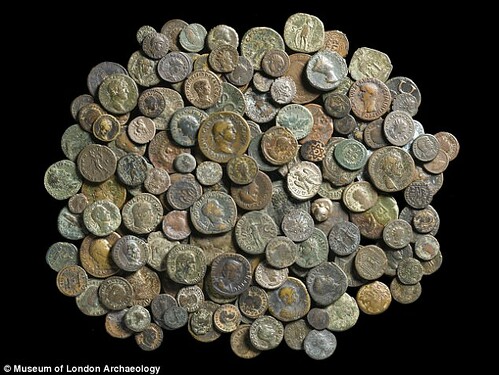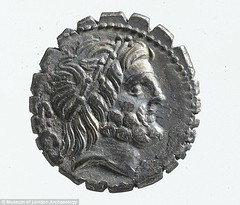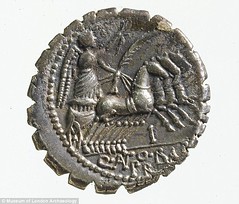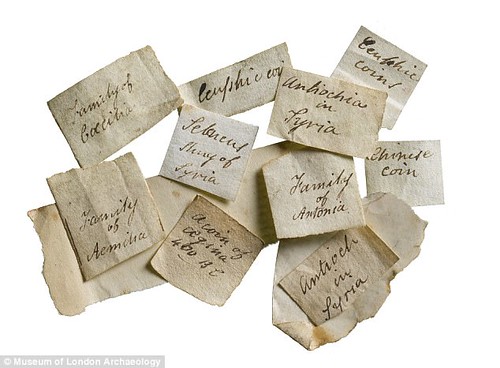
PREV ARTICLE
NEXT ARTICLE
FULL ISSUE
PREV FULL ISSUE
MORE ON THE SCOTNEY CASTLE COIN COLLECTIONDick Hanscom and Dick Johnson forwarded this Daily Mail article which has some more details and images of the Scotney Castle coin collection discussed last week. Thanks.
-Editor
 A collection of rare coins dating back 2,500 years have been uncovered in a study desk drawer at a 14th century castle in Kent. The unique hoard of 186 coins that came from as far away as China and Syria was discovered by volunteers searching for photographs at Scotney Castle in Lamberhurst, near Tunbridge Wells. The collection includes Greek coins from the seventh century BC and Roman coins from the late second century BC. The collection is believed to have been amassed by Edward Hussey III and his son Edwy in the 19th century. Nathalie Cohen, a National Trust archaeologist, said: 'We know that Edward and Edwy Hussey had a great interest in collecting, but this considerable cache of fascinating coins shows just how much their interest grew into a collection of exceptional importance. 'What is a mystery though is why a collection of this calibre ended up at the back of a drawer.'   The Husseys are thought to have gathered the trove between the 1820s and 1890s with an 1823 entry from Edward's diary showing prices of four to seven shillings and six pence paid for some coins. In one note from 1883 Edwy reveals he 'went to the British Museum with papa as he wanted to ask about some coins'. A National Trust spokesperson told MailOnline they have not sought to find the current value of the coins and say the collection will never be sold. The majority of the collection features Roman coins from the late second century BC to the fourth century AD. Experts from the Museum of London Archaeology (MOLA) believe 18 of the coins are rare examples. Julian Bowsher, a MOLA coin specialist, said the find was 'significant and diverse'. 'A particular highlight was seeing Roman coins that rarely appear in Britain, such as those of the third century emperors Balbinus, Pupienus and Aemilian, none of whom ruled for more than a year,' he added. A coin from the Greek island of Aegina is one of the earliest struck in Europe and features sea turtle, a creature sacred to Aphrodite.  To read the complete article, see: To read the earlier E-Sylum article, see: Wayne Homren, Editor The Numismatic Bibliomania Society is a non-profit organization promoting numismatic literature. See our web site at coinbooks.org. To submit items for publication in The E-Sylum, write to the Editor at this address: whomren@gmail.com To subscribe go to: https://my.binhost.com/lists/listinfo/esylum All Rights Reserved. NBS Home Page Contact the NBS webmaster 
|